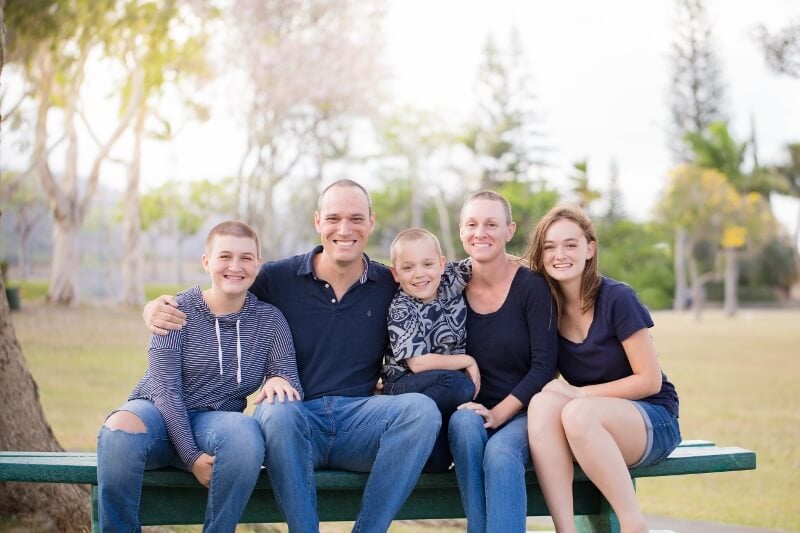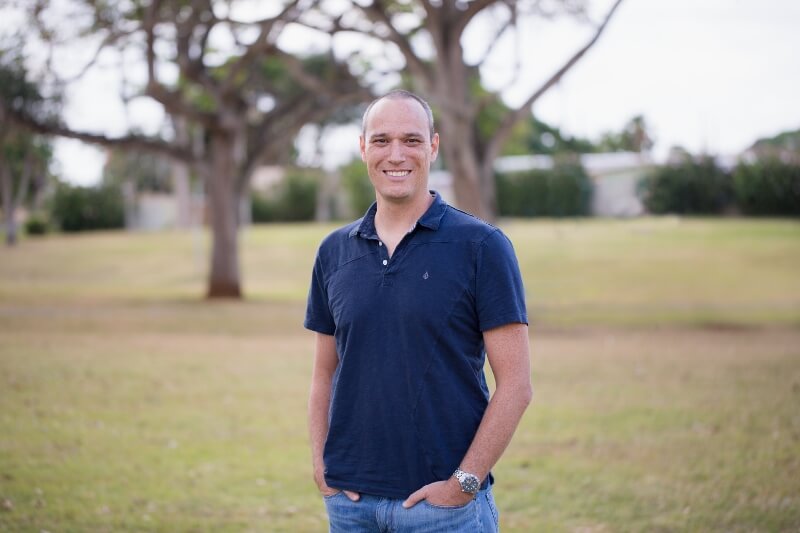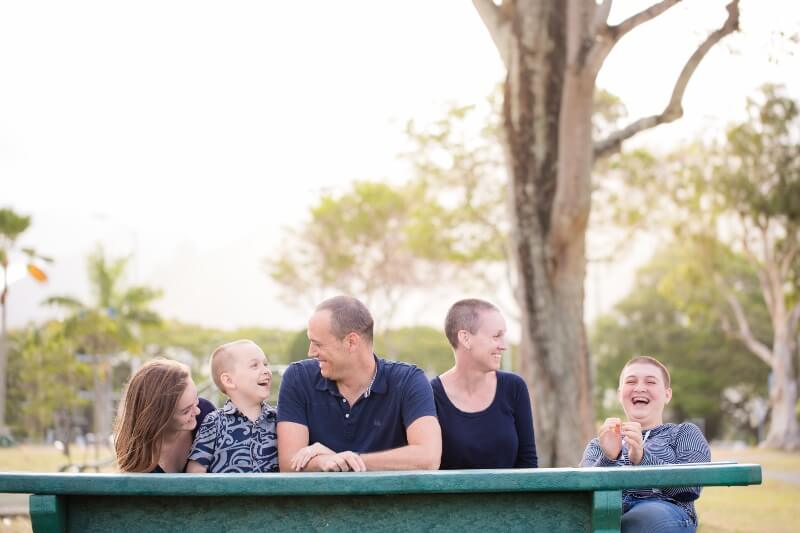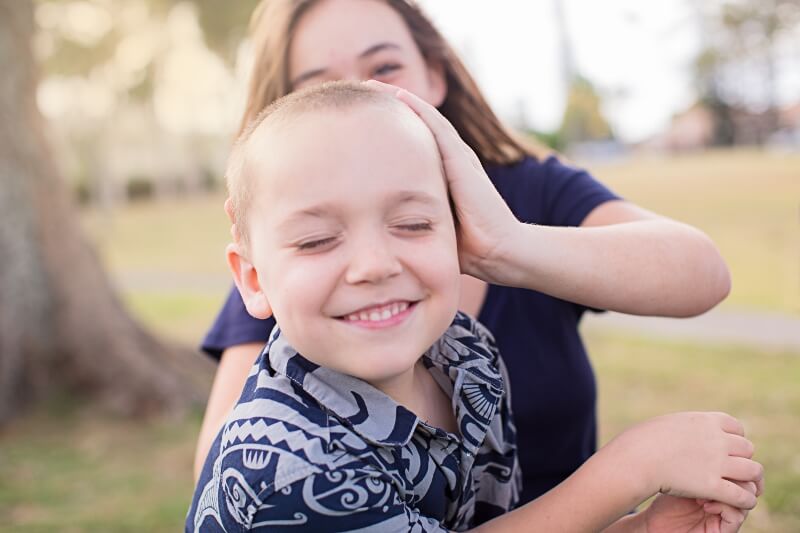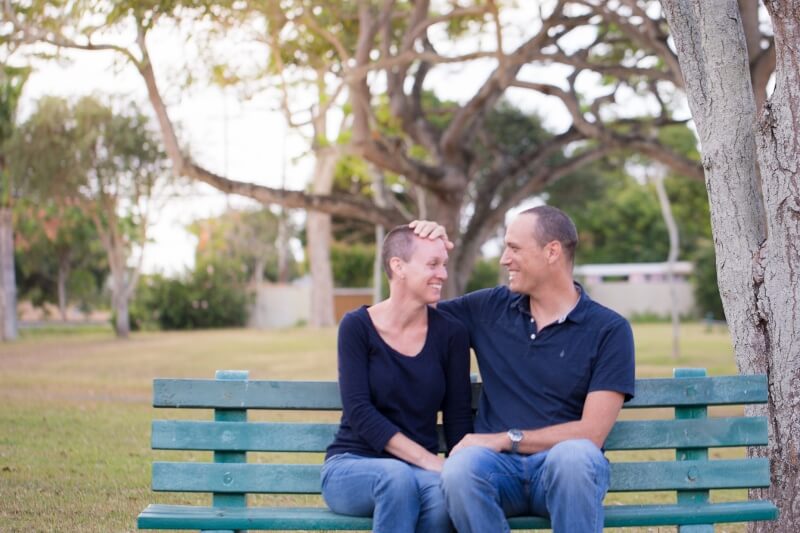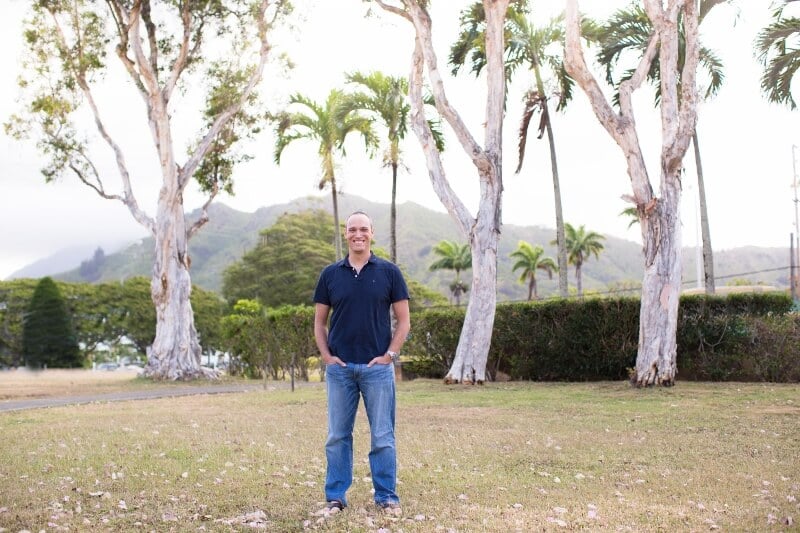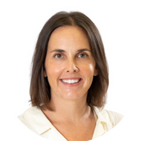Our Hawaii VA Loans Ambassador blog series is an endeavor through which we seek out veterans, active duty members, and spouses who are making a difference within the local community or who are taking on inspiring individual goals and challenges.
We sit down with our Ambassadors one-on-one and deliver an interview that gives you insight into the high caliber of people who make up our Hawaii military community.
We’re proud to bring you this season’s Ambassadors and hope that you are left as inspired as we are by their pursuits.
What makes our Hawaii VA Loans Summer 2015 Ambassador selection particularly special is that, for the first time, we are highlighting an entire family: Tripler Army Medical Center Pediatric Oncologist, Dr. Jeremy Edwards, his wife, Katey, his daughters, Claire and Lily, and his son, Owen.
Together, they help to raise awareness and funds for childhood cancer research by shaving or cutting their own hair…not for a one-time show of support, but every April for the past five years here in Hawaii.
Since 2010, Dr. Edwards, Katey, and their family have organized the St. Baldrick’s Hawaii Head Shaving Event at Dave and Buster’s in Honolulu. The first year (with only a few months of planning) the event raised a hugely impressive $101,000.
Their fifth event on April 26, 2015 raised $89,795 totaling an outstanding $430,894 raised in five years.
Yes, you read that number right! The Edwards’ yearly head shaving event has raised nearly half a million dollars for childhood cancer research! It all began when Dr. Edwards arrived to Hawaii as a pediatric oncologist at Tripler and discovered there had yet to be a St. Baldrick’s event on the island.
In our interview below, you’ll find out more about Dr. Edwards’ dedication and commitment to curing childhood cancer, why he chose to specialize in pediatric oncology, and what he has learned from the kids he has treated.
You’ll also hear from his wife, Katey, as well as his children, who not only support Dr. Edwards’ field of medicine and his work, but who have made it an integral part of their lives, too.
Interview with Dr. Jeremy Edwards & Family
How long have you been practicing as a pediatric oncologist and what factors or influences led to your specialization in the field?
JEREMY: I’ve been practicing as a pediatric oncologist for five years as a staff oncologist and three years as a fellow before that.
The reason I became a pediatric oncologist was during my pediatric residency, I knew I wanted to do something where I would have a long relationship with the kids. Really, the thing that I saw making the biggest impact in kids was peds oncology. It’s also a challenging specialty too; it has some procedures in it, inpatient and outpatient medicine, but really it was being able to be there long term with the kids from the very beginning. That was the big thing for me.
I was thinking about neonatology for a little bit and then Katey told me, “Why would you want to do that? You can’t play with the kids.” It’s very true!
What influenced your desire to be a doctor in the military?
JEREMY: I’ve always known I wanted to be a doctor, so I don’t remember not knowing that. Then I went to West Point and I was lucky enough – they sent me straight to medical school from West Point. Basically, from June 27th, 1993, I’ve pretty much been Army straight through.
Did you have a desire to be in the military at a young age?
JEREMY: I always knew I was going to go medical, but I had no idea I wanted to be in the military until about my junior year of high school and they recruited me for swimming for West Point. I went and I visited and just really, really liked it.
Katey, what is it like being a spouse to someone who works in a field that I’m sure has many highs and lows?
KATEY: It was a difficult transition coming here the first time, because this was our first military posting, and we got married while he was in medical school. I met him at West Point and I always knew that our life would be a military life, but I wasn’t living it until we got here. That was challenging.
He has always loved what he does so much that its been easy to be supportive. It’s less difficult on me than on him.
I don’t meet the patients much, so it’s easy for me to stand outside and be supportive of him when he needs it, because I’m not as drawn in as he is.
JEREMY: It’s great to be able to come home and she knows enough about what’s going on that she can be my sounding board and my lighthouse. It has been really wonderful support from that standpoint.
What is your time commitment to the military as a doctor?
JEREMY: Basically I can get out in 2024. I’ll have 23 years in and I don’t want to get out. That’s the thing, I really enjoy practicing medicine in the military because it has a lot of benefits to it that I wouldn’t have in the civilian world.
It’s great because they realize that we know what we’re doing. We are the ones who can make the decision. It’s not someone sitting in an office who makes the decision about what people need, they leave it to the doctors.
I also like that I’m not at a huge academic institution where I have to publish, publish, publish. I can just practice medicine. I really enjoy the leadership opportunities that I wouldn’t get somewhere else, too.
Tell us more about St. Baldrick’s, when you became involved with the organization and how you started the events here in Hawaii?
JEREMY: I first became exposed to St. Baldrick’s nine or ten years ago in Maryland when I was in my fellowship. My nurses had gone to a nursing meeting and St. Baldrick’s had a booth. They came back to Walter Reed and said, “Hey we want to do this, would you guys shave your heads?” We said, “Of course we would.” It just means I don’t get a haircut that month and we raise money, cool! That was just me as a participant.
I got here to Hawaii and saw that there wasn’t one, so we hunted around for a site and started it up in 2010. Dave & Buster’s downtown gave us a space. It was huge! We made $101,000 our first year. I think our goal that year was $50,000 and it turned out to be this gigantic event.
Wow! That’s impressive!
JEREMY: It was very grass roots which was cool. We couldn’t do a Tripler event, because it can’t be sponsored by the military. It was just a Hawaii oncology event. We got in touch with the guys down at Kapiolani. We really just started getting the word out through our patients and it just became bigger and bigger.
KATEY: It was very small and then in the couple of weeks right before…we’ve got the ballroom at Dave & Buster’s, we have this little silent auction, we’ve got five chairs up on the stage and then all of a sudden, boom, boom, boom, all these people kept signing up and all the money kept coming in.
JEREMY: It got so big so fast. St. Baldrick’s called and they said, “Your event has really gotten on a lot of people’s radars.” Their director of philanthropy flew out to the event. We became what they call a mega event within the space of just a couple of weeks.
How did the whole family decide to shave?
KATEY: Well, when Jeremy participated that first year, we didn’t really know what it was. Then the last year we were in Maryland, I shaved my head for the first time, and then we got here and Lily decided she was going to shave her head.
Lily, tell me about your decision to shave your head. What was going through your mind?
LILY: I remember earlier, when we did it in Maryland, that Claire had done it. When we came here and we were doing it, I didn’t really…people now care about their hair a lot more, and I really didn’t! I said, “You know what, I’ll shave, so sign me up before I change my mind.” They signed me up and it was like “Okay now I have to shave!”
JEREMY: The first year, Claire chopped her hair off. She hasn’t shaved, but she chops her hair significantly and then donates. She donated a good 10 inches this year. Lily has shaved every year we’ve had an event in Hawaii. It’s Owen’s second year having his head shaved.
How did Owen decide to shave his first year?
KATEY: He’s been coming to St. Baldrick’s events for as long as he can remember, before he can remember, and he knows what his dad does. At the events the patients are there – most of them you can tell because they’ve lost their hair.
JEREMY: Which is why we shave our heads.
KATEY: Some of the patients are people that Jeremy’s had for a long time, so you do get to know them and their families. Every year, we’ve asked Owen if he wants to and he has always said, “No.” He hates getting haircuts. Then last year, he was thinking about it and his kindergarten teacher said he would do it with him. Owen was like, “Okay.” They sat up there and did it together. They did it together again this year, too.
What are some of the most memorable moments for you each year? Tell us more about the emotion and the feeling on event day.
JEREMY: One of the biggest memories I have is actually from one of the first years we did it in Maryland. I had a patient who was diagnosed when he was 16 years old, and we’d actually become very good friends with his family. He always wore a beanie when he lost his hair and would never take it off. I had never seen him without it. His parents came and his dad asked if he could shave his head and the patient said, “No, you can’t, only one person is bald in this family and that’s me. You can’t shave your head.”
Then a bunch of his friends came and they said, “We’re shaving our heads, dude.” He said, “No, I don’t want you to, because it doesn’t matter.”
They passed a hat around, raised 500 bucks at once, and shaved their heads. He went up, helped shave their heads (because the kids get to help shave) and then he took his beanie off, and it was the only time we’ve ever seen him without his beanie on.
Then, unfortunately, two years later, he passed away because he had a progressive disease. Last year, he was actually one of St. Baldrick’s Ambassadors. They choose five Ambassadors every year. Four of them are kids who are currently fighting cancer or have already won, and then one is a kid who has passed away – to represent the 20% of children with cancer who still won’t survive.
We’ve become very, very good friends with his parents who actually moved out here after his dad retired from the Navy.
This year, they knighted me. When you do seven years of shaving, you become a Knight of the Bald Table. So the family actually knighted me at the beginning of the event, which was really cool. Seeing him at the first event and then having his parents knight me at this event were two really big ones.
Then, seeing the kids shaving. The kids shaving our heads is really one of the biggest things.
The kids must get a kick out of it!
KATEY: They love it. It’s their parents, their nurses, their doctors, adult friends, and kid friends.
JEREMY: I had this funky little tuft in the beginning and it’s fun seeing them just running around. One of the first years, one of my patients was almost the exact same age as Lil. They were just running around because they were both five years old. It was really cool to see that – to see the kids not care and realize it doesn’t matter. They can forget about being sick, that’s what I love. People think they’re going to be sad – the events – and they’re not. Not at all.
Do you have to shave your head if you go to the event?
JEREMY: No.
KATEY: No, it’s open to the public, just go and donate and be part of the action.
JEREMY: You don’t even have to donate.
KATEY: You don’t have to donate, it’s free.
Talk to me about the research side of things. I read on the St. Baldrick’s website that less than 4% of the National Cancer Institute’s budget is solely dedicated to childhood cancer research.
JEREMY: Right, so federal funding for childhood cancer research lags far behind adults, so you’ve got about 4% that goes to childhood. Our numbers are a lot smaller. We have many, many fewer patients than the adults do, which is good, but it’s also hard to come up with new drugs when there’s so few patients. There’s no money in it for a drug company. If you’ve got a cancer that’s got 200 new diagnoses a year, why would they put any money into developing a drug? Because that’s their bottom line.
The only way we can really get money is through a lot of these charitable organizations. St. Baldrick’s is actually the biggest non-federal fund source for childhood cancer research with well over $100 million since they’ve started.
Have you seen an improvement in treating children with cancer since you became an oncologist?
JEREMY: I have…and a lot of it. We’re part of Children’s Oncology Group. Basically, it’s a large cooperative group where we all pool our experiences and we treat patients based on a standard of care or research protocols that we all share, so that we actually have enough patients to be able to say, “This is the best treatment.” If I just did it with mine, I’d only have ten patients; I can’t say this is the best. I can’t do any trials or anything. A lot of what we’re doing now is actually decreasing the side effects of cancer. Especially leukemia, we have very good cure rates, we’re well over 90-95% cure rates, which is great, but 2/3 of kids with cancer will have some kind of long term effect from the chemotherapy, and a long term risk of cancer from the chemotherapy.
We’re really focusing on improving that. Neuroblastoma is one that we just got a new drug for. It was actually a St. Baldrick’s grant that led to this new therapy which has actually made stage 4 neuroblastoma survivable and has cure rates up in the 60 – 70% now. That’s the first purely pediatric cancer drug that has been approved in decades.
What do you see as the most crucial needs for childhood cancer treatment?
JEREMY: Awareness and funding. People have to be aware that it’s a problem. They have to know that we need funding because that’s the only way we get our research going. We’ve got great mechanisms in place for research. We don’t need to figure that out anymore, there’s plenty of people doing it. It’s just they need the money. We need people to know about it so we can get the money and continue doing the research. That’s really what it comes down to.
KATEY: The cool thing about St. Baldrick’s is that people doing different lines of research actually communicate with each other. They say, well we’re trying this, and this is what’s happening, and that would impact this line, and we could work together.
What have you learned from kids with cancer?
JEREMY: I’ve learned a ton from kids with cancer. The biggest thing you learn, and one of the main reasons I’m a pediatric oncologist, is because kids do really well. They are so strong, they are unbelievable. It doesn’t matter what you throw at them, and some of my treatments are horrible, they are just horrible stuff, and the kids are bouncing around. You learn strength.
KATEY: You learn strength, you learn grace.
JEREMY: Joy.
KATEY: They don’t shut down and wait until it’s over, because you can’t, because sometimes when it’s over, it’s not what you wanted to have happen. If you were to wait to live until you have a result, then you’ve missed all of that time. As a parent, that’s what you learn; there are no guarantees and to do your best to enjoy what you have.
Claire, I want to ask you, what have you learned from your dad being a doctor of kids with cancer?
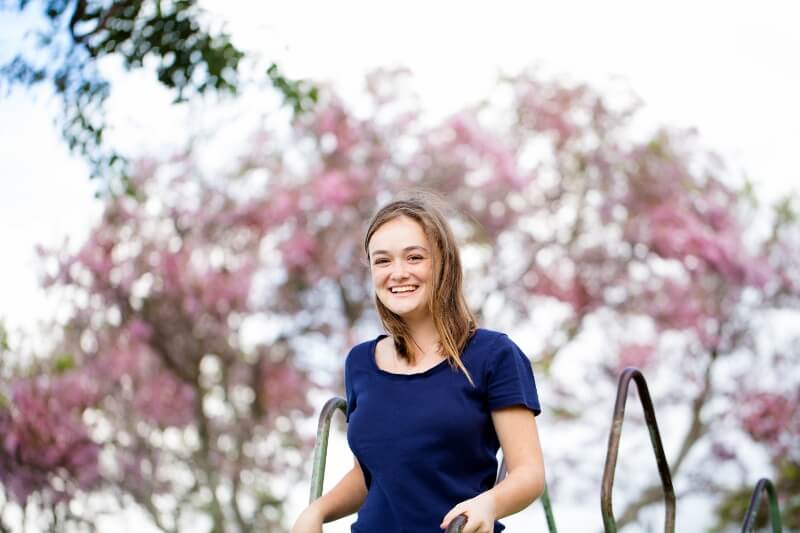
CLAIRE (looks at her dad): You handle the stress well.
JEREMY: Thank you.
KATEY: There are some days if there’s something going on and he lets me know during the day, he’ll call me and say, “Hug the kids for me.”
JEREMY: That’s the reason why I do so well with what I do, it’s because I have them. I have an incredibly good support system at home and I know that coming home is going to be fine regardless of how it was.
Mahalo nui loa to Dr. Jeremy and Katey Edwards, Claire, Lily, and Owen for taking the time for this interview! We are honored to call you our Hawaii VA Loans Summer 2015 Ambassadors and to have your extraordinary family as part of the Hawaii community!
Together, you embody the spirit of teamwork, selflessness, and volunteerism that motivates us all to get out there and support childhood cancer research!
To our readers – The Edwards’ St. Baldrick’s Hawaii event takes place the last Sunday in April each year. As Dr. Edwards said, “The plan is to keep it going as long as we can.”
Keep up with their event and St. Baldrick’s Foundation through the following links:
- St. Baldrick’s Hawaii Facebook: https://www.facebook.com/stbaldricks.hawaii
- Click HERE for this excellent YouTube video of the St. Baldrick’s Hawaii event: St. Baldrick’s Hawaii 2015 Video
- Donate to St. Baldrick’s Hawaii: https://www.stbaldricks.org/events/mypage/5750/2015
- St. Baldrick’s Foundation website: http://www.stbaldricks.org/

